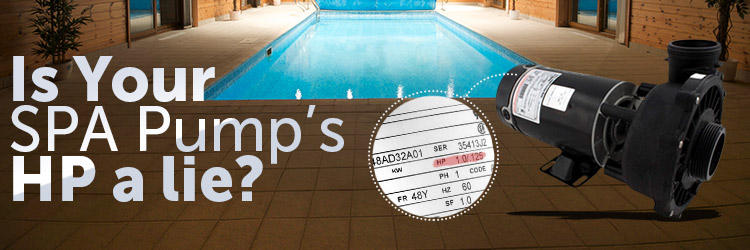Hi all,
I don't recall this being talked about but I wanted to ask about something I noticed recently.
I'm using a Hayward Matrix 1.5HP 2 speed pump. A good friend recently bought a AquaPro 2HP pump.
I compared 3 pumps. My dad's Hayward Powerflow II 1HP from 1990 which stated 12A @ 115V on the tag. This was a very strong pump for it's size.
My 1.5HP 2 speed which claims 11A and my friends AquaPro 2HP which says 10.5A on the tag. These are all at 115V.
Both my 1.5 and the 2HP do not seem any stronger at all than the old Powerflow II. Also, none of them have capacitors so I do not see how the current could be lower on the same type motor. It looks like the current Powerflow II being sold today still says 12A on the tag.
I just looked at some of Hayward's inground pumps and they appear to have more reasonable current specs, such as 19.4A for 2HP at 115V. Makes me think the real difference between the in ground and above ground pumps are actually "Economy series vs quality series" rather than the elevation of the pool.
I suspect the cheaper pumps have inflated numbers and so called 1.5HP and 2HP pumps for AGP's aren't what they claim. Kind of like the 6HP 120V shop vacuums that are lucky if they're 1HP.
But I have no way to actually test this. The 1.5HP Matrix pump was drawing just under 900W in high, but it's hooked to a filter and the eyeball in the return restricts some as well.
Thoughts?
I don't recall this being talked about but I wanted to ask about something I noticed recently.
I'm using a Hayward Matrix 1.5HP 2 speed pump. A good friend recently bought a AquaPro 2HP pump.
I compared 3 pumps. My dad's Hayward Powerflow II 1HP from 1990 which stated 12A @ 115V on the tag. This was a very strong pump for it's size.
My 1.5HP 2 speed which claims 11A and my friends AquaPro 2HP which says 10.5A on the tag. These are all at 115V.
Both my 1.5 and the 2HP do not seem any stronger at all than the old Powerflow II. Also, none of them have capacitors so I do not see how the current could be lower on the same type motor. It looks like the current Powerflow II being sold today still says 12A on the tag.
I just looked at some of Hayward's inground pumps and they appear to have more reasonable current specs, such as 19.4A for 2HP at 115V. Makes me think the real difference between the in ground and above ground pumps are actually "Economy series vs quality series" rather than the elevation of the pool.
I suspect the cheaper pumps have inflated numbers and so called 1.5HP and 2HP pumps for AGP's aren't what they claim. Kind of like the 6HP 120V shop vacuums that are lucky if they're 1HP.
But I have no way to actually test this. The 1.5HP Matrix pump was drawing just under 900W in high, but it's hooked to a filter and the eyeball in the return restricts some as well.
Thoughts?



